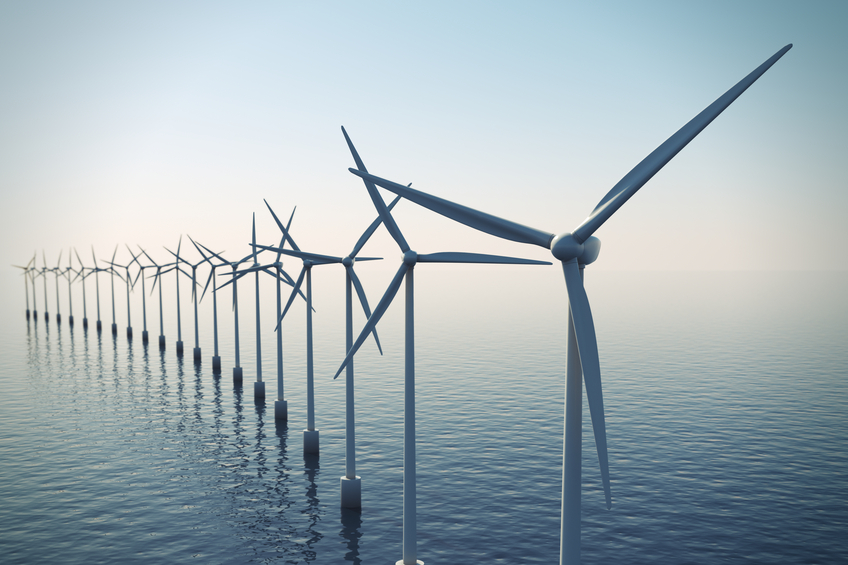Maine Energy Efficiency 30 PDH Discount Package 3
Small Wind Electric Systems to Power Your Home (R03-017)
Biomass Oil Analysis (P08-001)
Advancing Clean Electric Power Technologies: Solar Power (R02-016)
Biodiesel Handing and Use Guide (R04-008)
Cost, Performance and Maturity of Electricity Storage Technologies (R05-002)
Distributed Solar and Building Energy Systems in a Decarbonized Grid (R04-010)
Future Energy Sources (M03-047)

This online engineering PDH course presents basic information regarding geothermal energy, its advantages over traditional energy sources, and the energy savings associated with its use. This course explains the different types of geothermal resources and how they are implemented in the industry, as well as the different types of geothermal power plants used. Furthermore this course highlights the direct uses of geothermal energy and illustrates the benefits of geothermal heat pumps.
This 1 PDH online course is applicable to engineers, contractors, designers, home owners, and personnel who are seeking an understanding of geothermal energy.
This PE continuing education course is intended to provide you with the following specific knowledge and skills:
- Understanding geothermal energy and its benefits
- Learning about the different types of geothermal resources
- Learning about the various geothermal power plants
- Learning about energy savings behind geothermal heat pumps
In this professional engineering CEU course, you need to review the DOE Publication, "Geothermal Energy - Power form the Depths", published by the Department of Energy.
Upon successful completion of the quiz, print your Certificate of Completion instantly. (Note: if you are paying by check or money order, you will be able to print it after we receive your payment.) For your convenience, we will also email it to you. Please note that you can log in to your account at any time to access and print your Certificate of Completion.

This online engineering PDH course provides basic information about small wind electric systems to help you decide if wind energy will work for you.
Wind is created by the unequal heating of the Earth's surface by the sun. Wind turbines convert the kinetic energy in wind into mechanical power that runs a generator to produce clean electricity.
Can I use wind energy to power my home? More people across the country are asking this question as they look for a hedge against increasing electricity rates and a way to harvest their local wind resources. Although wind turbines large enough to provide a significant portion of the electricity needed by the average U.S. home generally require 1 acre of property or more, approximately 19.3% of the U.S. population lives in rural areas and may own land parcels large enough to accommodate a wind energy system.
This 3 PDH online course is applicable to electrical and mechanical engineers and energy professionals who are interested in learning more about small wind electric systems.
This PE continuing education course is intended to provide you with the following specific knowledge and skills:
- Familiarizing with wind energy, terminology, and basic principles of wind turbines
- Understanding the different ways to make a home more energy efficient
- Understanding how and when small wind energy systems provide a practical and economical source of electricity
- Learning about the size of wind turbines required for specific applications
- Learning about the basic parts of a small wind electric system
- Knowing where to find certified small wind turbines, as well as installation and maintenance support
- Calculating how much energy a wind electric system will generate
- Gaining a general overview of hybrid wind energy systems
Upon successful completion of the quiz, print your Certificate of Completion instantly. (Note: if you are paying by check or money order, you will be able to print it after we receive your payment.) For your convenience, we will also email it to you. Please note that you can log in to your account at any time to access and print your Certificate of Completion.

This online engineering PDH course describes biomass oils and distillate fuel use opportunities, production, composition, supply and biorefinery methods. This course also discusses business advantages of using alternate fuels such as biomass fuels to improve the bottom line.
Biorefinery technology can improve the income of firms that produce energy products combined with biobased coproducts. They do this by producing a variety of high value products in addition to the typically low value fuels. The biomass feedstocks evaluated in this report are lipids from animal fats, fish and poultry oils, plant oils, and recycled cooking greases. Higher rates of return attract investors and lead to expanded capacity. Profits generated by the biobased fuels may encourage more investment, more facilities, and eventually a larger biofuel supply. Thus, biomass biorefineries need biobased coproducts to succeed in the fuels industry.
This 8 PDH online course is applicable to engineering professionals, design and construction personnel, technical staff and facility personnel who are interested in gaining a better understanding of biomass oil analysis.
This PE continuing education course is intended to provide you with the following specific knowledge and skills:
- Biomass oil and distillate fuels
- Distallate applications, standards and grades
- Fuel economy
- Biomass oil composition
- Heating oil blends with biodiesel
- Converting biomass oils to hyrocarbon fuels
- Biomass oil supply and production
- Current biomass oil supply
- Near and long term expansion potential
- Ultimate supply potential
- Production of biomass oils and fuels
- Biorefinery opportunities
In this professional engineering CEU course, you need to review the material contained in Biomass Oil Analysis: Research Needs and Recommendations, NREL Publication No. NREL/TP-510-34796, June 2004.
Upon successful completion of the quiz, print your Certificate of Completion instantly. (Note: if you are paying by check or money order, you will be able to print it after we receive your payment.) For your convenience, we will also email it to you. Please note that you can log in to your account at any time to access and print your Certificate of Completion.

This online PDH course briefly discusses the solar market and solar energy’s technical and resource potential. Also, it addresses R&D strategy and priorities, the development and status of solar technologies and markets, projected solar deployment and impacts, and solutions for high-penetration of renewable energy into the electricity grid.
Solar energy offers a number of strategic benefits to the United States. Replacing fossil-fuel combustion with solar energy reduces emissions of human-induced greenhouse gases and air pollutants.
Despite these benefits, solar energy currently supplies only a small fraction of U.S. energy needs, largely because it historically has cost more than conventional energy sources. However, solar manufacturing costs and sales prices have dropped dramatically over the past few decades, and solar technologies are approaching energy-price parity with conventional generating sources in some regions of the United States and abroad.
This 2 PDH online course is intended for mechanical, electrical and renewable energy engineers as well as others interested in learning more about the current solar market and solar energy’s technical and resource potential.
This PE continuing education course is intended to provide you with the following specific knowledge and skills:
- Familiarization with the solar market and solar energy’s technical and resource potential
- Familiarizing with R&D strategy and priorities
- Understanding the development and status of solar technologies and markets
- Understanding the nature of projected solar deployment and their impact on the U.S. electricity markets
Upon successful completion of the quiz, print your Certificate of Completion instantly. (Note: if you are paying by check or money order, you will be able to print it after we receive your payment.) For your convenience, we will also email it to you. Please note that you can log in to your account at any time to access and print your Certificate of Completion.

This online engineering PDH course provides an overview of biodiesel blends, the advantages of using biodiesel, precautions for use of biodiesel during cold weather, and the proper procedures for handling and use of biodiesel. This course also provides detailed information on biodiesel testing requirements and compatibility issues.
Biodiesel is a diesel replacement fuel for use in diesel engines. It is manufactured from plant oils, animal fats, and recycled cooking oils, is most commonly used as a blend with petroleum diesel in compression-ignition engines. Some of the advantages of Biodiesel are that it is renewable, can reduce greenhouse gases, compatible with new technology diesel engines, nontoxic, biodegradable, and suitable for sensitive environments.
This 4 PDH online course is intended primarily for energy, chemical, environmental, mechanical, civil and industrial engineers. Someone completing this course will gain knowledge about the use and handling of biodiesel.
This PE continuing education course is intended to provide you with the following specific knowledge and skills:
- Understanding the sources and processing of biodiesel
- Learning about the benefits and attributes of biodiesel
- Familiarizing with Physical properties of biodiesel as compared to No. 2 diesel
- Understanding the ASTM D6751 standards for biodiesel quality
- Learning about the material compatibility issues for biodiesel
- Learning about the cold-weather issues for biodiesel
- Understanding how to properly blend, store, and transport biodiesel
- Learning about the engine and equipment warranties involved with biodiesel use
- Learning about the taxes and incentives for biodiesel
- Familiarizing with basic safety, health, and environmental issues for biodiesel
- Understanding the fire safety and firefighting considerations
Upon successful completion of the quiz, print your Certificate of Completion instantly. (Note: if you are paying by check or money order, you will be able to print it after we receive your payment.) For your convenience, we will also email it to you. Please note that you can log in to your account at any time to access and print your Certificate of Completion.

This online engineering PDH course discusses the cost, performance and maturity of electricity storage technologies, with much of the discussion focusing on recent developments in battery technology.
The sections of the course are organized by technology and provide a snapshot of the status, trends in deployment, data sheets on performance, and design features. Estimates of life-cycle costs for each technology are also provided, along with the key assumptions used. Emerging technologies still in the early research and development stage are noted in the last section of the course but are not reviewed in detail.
In general, electricity storage technologies can be classified by the power they can deliver and the time required delivering it. Thus compressed air energy storage and pumped hydro are capable of discharge times in tens of hours with power ratings reaching 1000 MW. In contrast to these large sizes, flywheels and batteries cluster in the lower end of the discharge duration spectrum, ranging from a few seconds to 6 hours.
This 5 PDH online course is intended for electric systems engineers/planners, storage system vendors, and regulators concerned with the design and implementation of stationary energy storage systems.
This PE continuing education course is intended to provide you with the following specific knowledge and skills:
- Pumped hydro
- Compressed air energy storage
- Sodium-sulfur batteries
- Sodium-nickel-chloride batteries
- Vanadium redox batteries
- Iron-chromium batteries
- Zinc-bromine batteries
- Zinc-air batteries
- Lead-acid batteries
- Flywheel energy storage
- Lithium-ion family of batteries
In this professional engineering CEU course, you need to review the course document titled, “Cost, Performance, and Maturity of Electricity Storage Technologies” which is based on Chapter 2, “Electricity Storage Technologies, Cost, Performance, and Maturity” of the “DOE/EPRI Electricity Storage Handbook in Collaboration with NRECA,” February 2015.
Once you complete your course review, you need to take a multiple-choice quiz consisting of thirty (30) questions to earn 5 PDH credits. The quiz will be based on this publication.
Upon successful completion of the quiz, print your Certificate of Completion instantly. (Note: if you are paying by check or money order, you will be able to print it after we receive your payment.) For your convenience, we will also email it to you. Please note that you can log in to your account at any time to access and print your Certificate of Completion.

This online engineering PDH course explores the role of demand-side resources in grid transformation and deep decarbonization.
Building energy technologies—including energy-efficient devices, flexible loads, and energy storage—can be coordinated and aggregated to perform similar functions as centralized grid assets. In addition, building energy technologies enable the deployment of distributed solar photovoltaics (DPV). The term distributed solar broadly refers to energy produced by solar panels installed on various rooftops in a (possibly large) geographic area, in contrast to concentrated solar, which refers to energy produced by utility-scale solar power plants. Together, DPV and building energy technologies could help grids achieve deep decarbonization more quickly and cost-effectively.
Demand-side resources can complement supply-side solutions to deep decarbonization by reducing grid net loads and enhancing grid flexibility. The potential benefits of building energy technologies are generally on the order of 20% (e.g., 20% increase in output, 20% reduction in demand, 20% reduction in costs).
This 4 PDH online course is applicable to electrical and energy engineers and professionals who are interested in in applications of solar photovoltaics to building energy systems.
This PE continuing education course is intended to provide you with the following specific knowledge and skills:
- Familiarizing with the trends in DPV and building energy-systems growth
- Knowing the effect of regulatory reforms on demand-side services
- Understanding demand response as an incentive for consumers to reduce their demand for electricity during peak periods of demand
- Recognizing the role of demand-side resources
- Determining the size of the demand-side opportunity to decarbonize grids more quickly and cost-effectively
- Characterizing barriers to beneficial adoption of demand-side resources
- Estimating compatibility and interoperability of communication devices
- Understanding energy policy, building policy, and building user pathways for future development
Upon successful completion of the quiz, print your Certificate of Completion instantly. (Note: if you are paying by check or money order, you will be able to print it after we receive your payment.) For your convenience, we will also email it to you. Please note that you can log in to your account at any time to access and print your Certificate of Completion.

This online engineering PDH course describes the state-of-the art, cutting edge efforts by scientists and engineers in the United States who are involved with research to continue to find alternate energy sources for the future. These energy sources will be of vital importance to sustaining and improving the quality of life on planet earth and beyond. This course explains how the U.S. Department of Energy (DOE) leads the world in the conception, design, construction, and operation of these large-scale devices. It also discusses that these machines have enabled U.S. researchers to make some of history's important scientific discoveries, with spin-off technological advances leading to entirely new industries.
Throughout its history, the Department of Energy's Office of Science has designed, constructed, and operated many of the Nation's most advanced, large-scale research and development user facilities, of importance to all areas of science. These state-of-the-art facilities are shared with the science community worldwide and contain technologies and instrumentation that are available nowhere else. As the steward of America's national laboratories, the Department of Energy has a special responsibility to plan for and propose Office of Science investments for the future that will serve to advance the national, energy, and economic security of the United States.
This 3 PDH online course is intended for engineers who are interested in current and future state-of-the art energy sources that will provide good stewardship of America's limited energy sources.
This PE continuing education course is intended to provide you with the following specific knowledge and skills:
- Energy Sciences Network (ESnet)
- National Energy Research Scientific Computing (NERSC) Center
- National Synchrotron Light Source (NSLS)
- Advanced Light Source (ALS)
- Advanced Photon Source (APS)
- High Flux Isotope Reactor (HFIR) Center for Neutron Scattering
Upon successful completion of the quiz, print your Certificate of Completion instantly. (Note: if you are paying by check or money order, you will be able to print it after we receive your payment.) For your convenience, we will also email it to you. Please note that you can log in to your account at any time to access and print your Certificate of Completion.